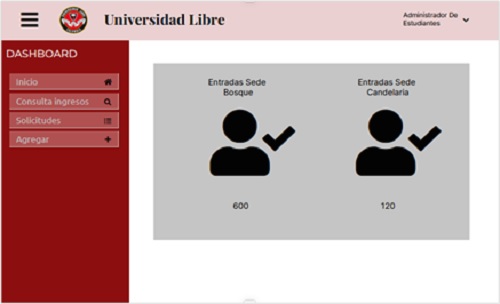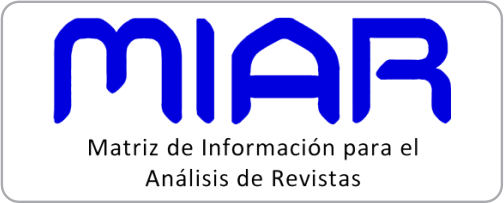User centered design and user experience in Universidad Libre access control system
DOI:
https://doi.org/10.51252/rcsi.v3i1.426Keywords:
web application, COVID-19, user interface, pandemic, prevention protocolsAbstract
User-centered design has become a fundamental part of any software application development project, therefore, if you want to provide a user with a simple way to perform tasks or activities within a certain web page, platform, or application, it is essential. simplify and optimize the elements that are part of the site to provide a satisfactory user experience. This article discusses the essential elements of the user-centered design that are part of the web application for the control of capacity in the Bogota venues, developed for the Universidad Libre in order to comply with the regulations issued by the Colombian state, due to the health emergency generated by COVID-19. In addition to identifying, through a usability test, what were the different aspects that needed to be implemented so that future updates can be carried out and thus generate an improvement in the user experience, additionally a description of the planning process that was carried out and the reason why the project was proposed.
References
Abraham, N. (2021). ¿Qué es UX y UI? Coderhouse. https://www.coderhouse.com.co/blog/que-es-ux-ui
Arciniegas, J. L., Fernández, V., Hormiga, A., Tulande, A., Fernando A., U., & Collazos, C. A. (2009). Proceso de requerimiento y análisis para la definición de la arquitectura desde la perspectiva de usabilidad para el desarrollo de aplicaciones en la Web. Revista Avances En Sistemas e Informática, 6(2), 205–210. https://www.redalyc.org/articulo.oa?id=133113598023%250AC%25C3%25B3mo
Aveleira Rodriguez, Y., & Silva Barrera, D. (2011). Laboratorio para diseño de experiencia de usuario. Revista Cubana de Ciencias Informáticas, 5(3), 1–7. https://www.redalyc.org/pdf/3783/378343673008.pdf
Bastien, J. M. C. (2010). Usability testing: a review of some methodological and technical aspects of the method. International Journal of Medical Informatics, 79(4), e18–e23. https://doi.org/10.1016/j.ijmedinf.2008.12.004
Bodker, S. (2022). Scenarios in user-centred design-setting the stage for reflection and action. Proceedings of the 32nd Annual Hawaii International Conference on Systems Sciences. 1999. HICSS-32. Abstracts and CD-ROM of Full Papers, 11. https://doi.org/10.1109/HICSS.1999.772892
Cordero, Á., & Doncel, A. (2021). El 2020 y la irrupción de una pandemia que cambió el mundo. France 24. https://www.france24.com/es/programas/especial-noticias/20210104-resumen-2020-año-pandemia-covid19-crisis-sanitaria
DINYCON. (2018). Principales ventajas de los sistemas de control de aforos. Diseño, Ingeniería y Control. https://www.dinycon.com/es/blog/principales-ventajas-de-los-sistemas-de-control-de-aforos
Fenalco. (2021). Pandemia dispara reuniones virtuales 148% y empleados alertan desgaste laboral. Fenalco Antioquia. https://www.fenalcoantioquia.com/blog/pandemia-dispara-reuniones-virtuales-148-y-empleados-alertan-desgaste-laboral/
Fernández Casado, P. E. (2018). Usabilidad Web. Teoría y uso (1st ed.). Ra-Ma.
Krug, S. (2006). Don’t make me think (2nd ed.). New Riders.
Ministerio de Salud y Protección Social. (2021). Incrementar el aforo permitido en lugares o eventos masivos, públicos o privados. Resolución N°1687, 25 de Octubre de 2021, 1–3. https://www.minsalud.gov.co/Normatividad_Nuevo/Resolución No. 1687 de 2021.pdf
Nielsen, J. (1999). Designing Web Usability (1st ed.). New Riders.
Ortega-Ordóñez, W. A., Pardo-Calvache, C. J., & Pino-Correa, F. J. (2019). Systematic mapping on the agility evaluation in software development organizations. ITECKNE, 16(1), 64–76. https://doi.org/10.15332/iteckne.v16i1.2162
Pratt, A., & Nunes, J. (2013). Diseño interactivo. Teoría y aplicación del DCU (1st ed.). Océano-Ambar.
Sommerville, I. (2005). Requerimientos del Software (6th ed.). Pearson Education.
Tello Carrascal, V., Alvarez Coll, J., Artell Moreno, M., & Grado Guerrero, D. (2021). Sistema de Control de Aforo en Espacios Cerrados [Universidad Complutense Madrid]. https://eprints.ucm.es/id/eprint/66909/
Valarezo Pardo, M. R., Honores Tapia, J. A., Gómez Moreno, A. S., & Vinces Sánchez, L. F. (2018). Comparación de tendencias tecnológicas en aplicaciones web. 3C Tecnología. Glosas de Innovación Aplicadas a La Pyme, 7(3), 28–49. https://www.3ciencias.com/articulos/articulo/comparacion-de-tendencias-tecnologicas-en-aplicaciones-web/

Published
How to Cite
Issue
Section
License
Copyright (c) 2023 Sergio Iván Pedraza-Gutiérrez, Juan Felipe Romero-González, Juan Carlos Güiza-Rodríguez, Ever William Giraldo-Henao

This work is licensed under a Creative Commons Attribution 4.0 International License.
The authors retain their rights:
a. The authors retain their trademark and patent rights, as well as any process or procedure described in the article.
b. The authors retain the right to share, copy, distribute, execute and publicly communicate the article published in the Revista Científica de Sistemas e Informática (RCSI) (for example, place it in an institutional repository or publish it in a book), with an acknowledgment of its initial publication in the RCSI.
c. Authors retain the right to make a subsequent publication of their work, to use the article or any part of it (for example: a compilation of their works, notes for conferences, thesis, or for a book), provided that they indicate the source of publication (authors of the work, journal, volume, number and date).














